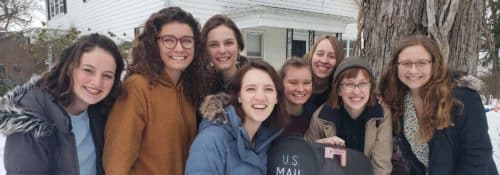
The Halfway House: A Surprising History
A Tale of Two Houses
Written by Marcella Brylski
Ithaca. Casablanca. Lower Egypt. The Nest. East Berlin. Graceland. What do these names have in common? While they may seem at first disconnected, spanning the world and bearing all sorts of connotations from Ancient Greek epic to the King of Rock ‘n’ Roll, they share one thing: they are all names of off-campus student houses at Hillsdale College.
Some of these houses have fixed identities that span up to a decade (a long time in the constantly shifting realm of matriculation and graduation), while others appear only for a year or two.
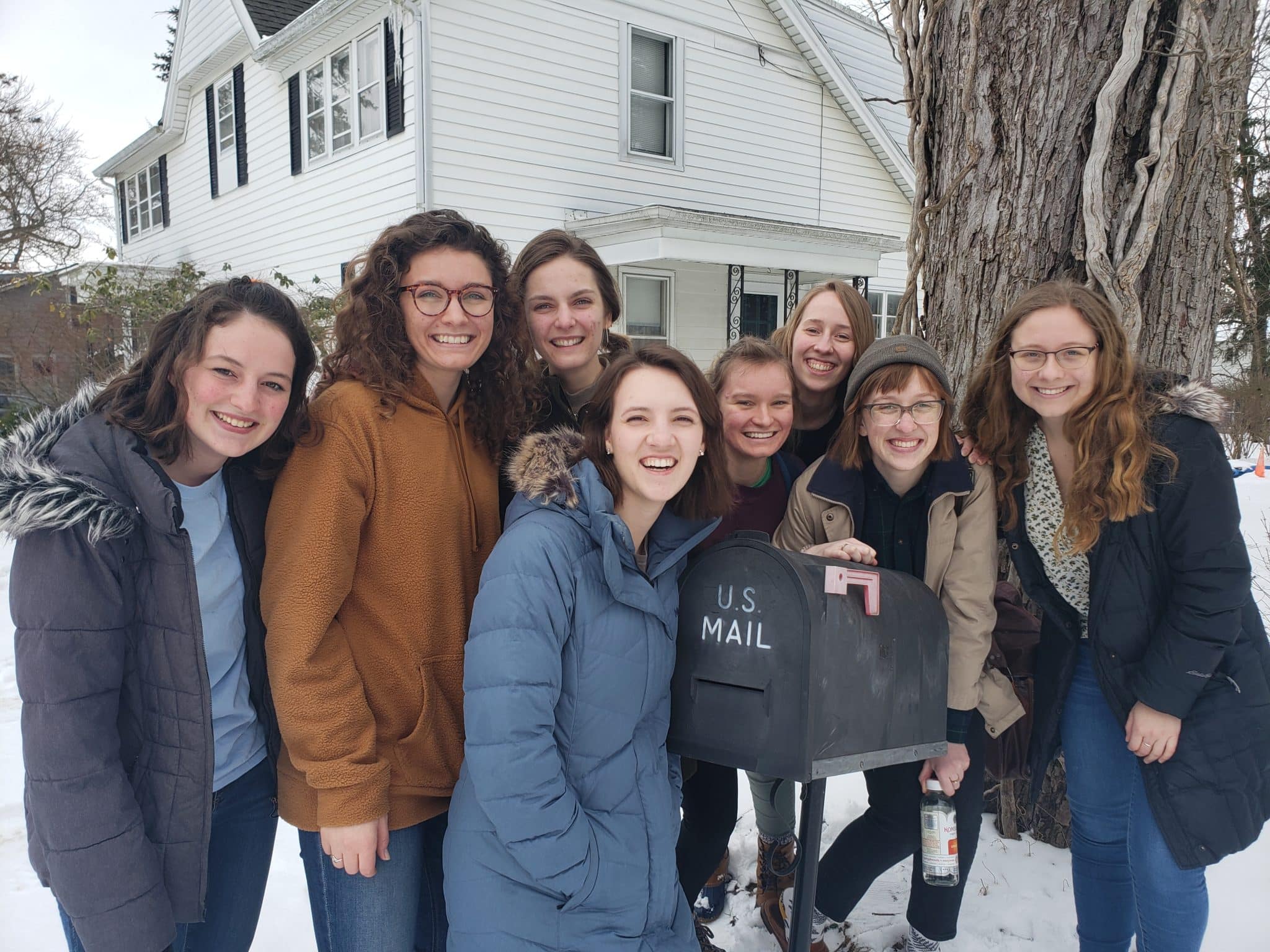
In the perhaps rare case of one house, however, there is a surprising history going back almost two decades.
My friends and I, a group of nine women, moved into a big, beautiful off-campus house in our junior year. After months of agonizing over a name for the house, we landed on The Halfway House, a name which both matched our strange half-number address and expressed the sometimes strange, in-between time that college students inhabit. In November 2018, an article was published in The Collegian about our house and its culture.
Little did we know, we were the second Halfway House in Hillsdale history.
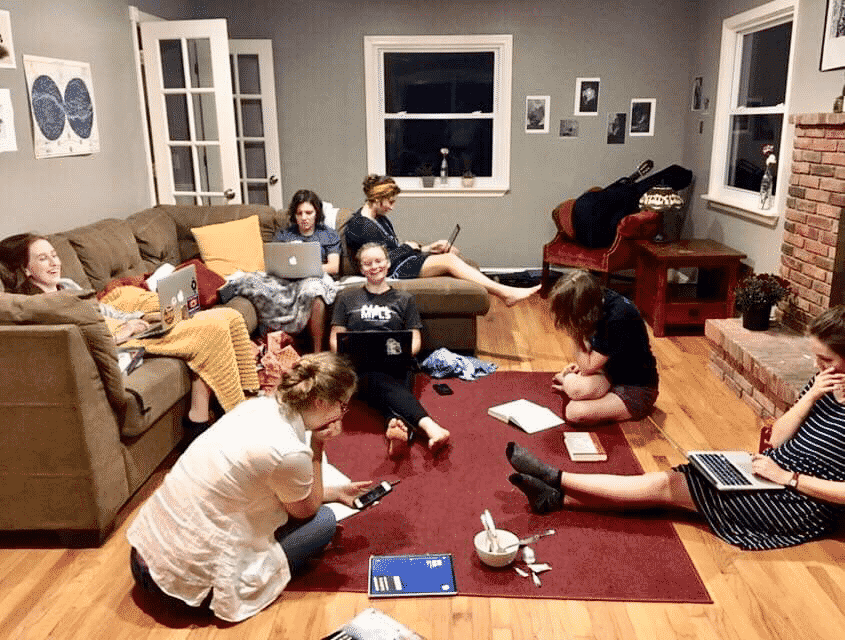
Soon after the story was posted online, a comment popped up: “Back in 2003,” the comment read, “when I lived in the house, as the first college group to live at 163 1/2 Oak Street, we also named it The Halfway House, before the remodel, when life wasn’t as luxurious.” This comment was from Jeanna Miller Watts ’04. Below the comment, Jeanna included a picture of five girls standing around a huge mailbox much like our own, at the end of what we recognized as our own driveway.
These five girls represented a variety of majors and interests on campus, including music, biology, theatre, international business, French, history, and pre-law. None of them expected to live together until shortly before they moved in: all of the girls who moved into the house expected to live in the dorms or in their sorority houses. But, because of a large freshman class and “the beginning of the end of the Alpha Xi Delta sorority,” they all had to scramble to find somewhere to live off-campus.
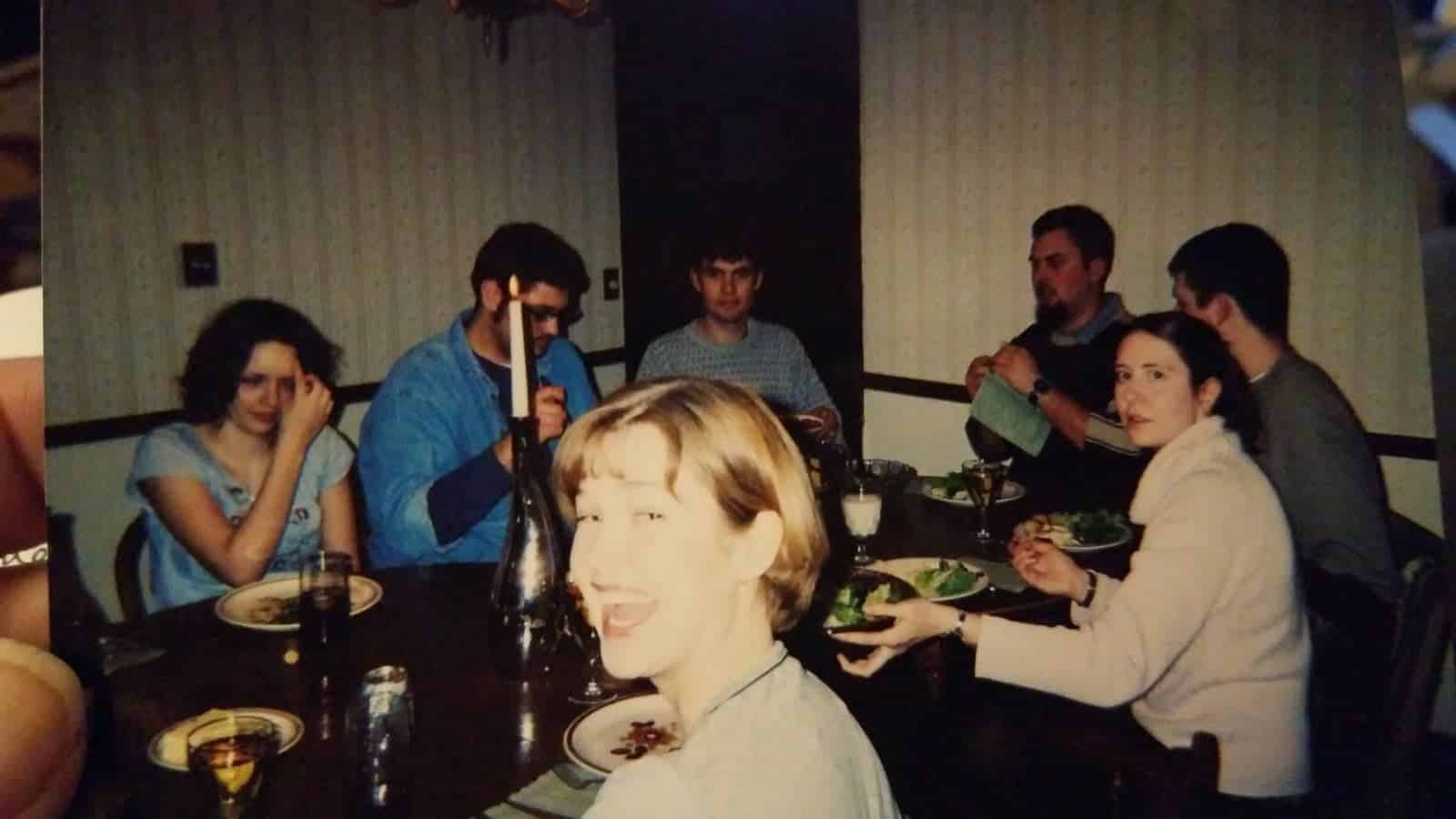
The move off-campus, however, helped them to become fast friends, in both senses: not only did they bond quickly, but their friendship is still strong to this day. They have been in one another’s weddings and have had Halfway House reunions for several years (although these had to end when they started having kids). Perhaps even more impressive, the former Halfway House residents still talk to one another on a weekly basis.
This long-lasting community began, in part, because of their ability to host and because of the luxury of having “the cleanest, biggest, nicest off-campus house,” as Jeanna described it. Their space made The Halfway House the natural place for them to spend time together, doing things like team-playing Legends of Zelda on their gaming TV (which was in the same room as is pictured in the 2018 Collegian article, with the fireplace) and to have “people over every weekend just to hang out.”
They didn’t only host small, casual gatherings though. They threw some bigger parties including two internationally-themed ones to which all of the off-campus houses were invited (as Jeanna wrote, “they were huge!”) and the after-initiation party for Phi Mu Alpha (one of the music fraternities on campus) to which over two hundred people showed up. (The 2018-19 Halfway House, interestingly enough, also put on a party together with Phi Mu Alpha—for us, a house show featuring a Phi Mu band that ended up being our largest party too.)
Not everything about the 2003 Halfway House was luxurious, though. Jeanna described the inside of the house to me as “straight 1978”: not only was there “wood paneling everywhere,” there was also green-and-black shag carpet in one of the upstairs bedrooms that they tore out before the beginning of the school year. As Jeanna wrote, and as I’m sure we can all imagine, “It was terrible.”
“Straight 1978” or not, the story of The Halfway House illustrates the value of off-campus living. It brings people together in often unexpected ways and, by giving them a shared space of their own, can both enrich their experience while in college and create lasting bonds of friendship between them.
When Jeanna wrote to me, she stressed the importance of the house itself in providing some of her best memories at Hillsdale. “There were so many cool things that we did that we would have not been able to do had we not lived at that house,” she wrote.
I think I can say for all of my own housemates—the residents of The Halfway House almost twenty years later—that the same has been true for us. While we were all friends before moving in, I would never have gotten to know some of the girls in our house nearly so well without living with them, hosting dance parties with them, and coming home after a late night at the library to their laughter and companionship.
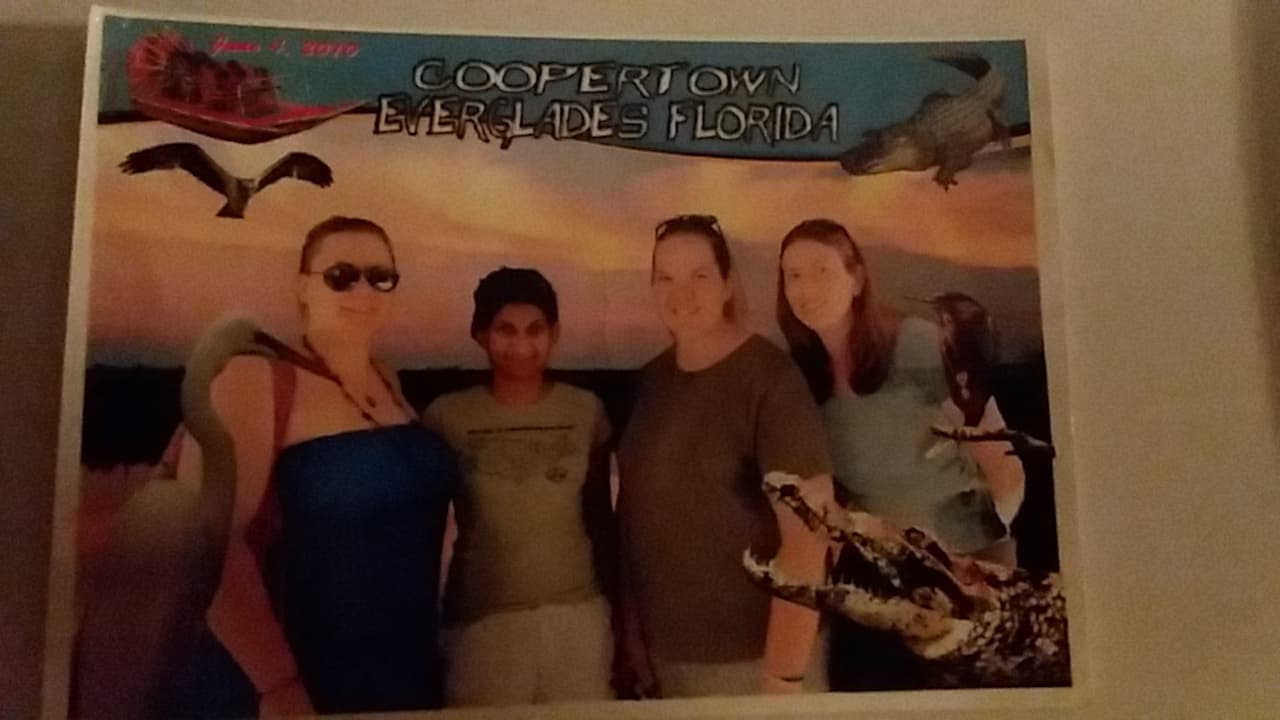
Dorms do a great job of introducing students to community. They often result in beautiful, unexpected friendships. The shared highs and lows of living in a house with eight other girls, however, have deepened my friendships in ways that I never would have imagined. Living independently alongside other students has created a unique kind of bond. All of us are equally responsible not only for party planning but also for paying rent, cleaning the bathroom, and supporting one another through classes, relationships, and job-searching. At best, this leads to a community that takes on a life and identity of its own, in which each individual finds her own place and role. A college house, while temporary, can start to feel like a home, and the bonds of friendship more like the bonds of family.
As a result, off-campus houses, small corners of a larger community, take on different characters and qualities depending on the people who live there. A late night talk at The Nest has a coziness and hospitality that differs from laughter-filled evenings of music at Casablanca; and a dance party at Graceland has, once again, its own character. Each is indispensable to the wider off-campus community in that it provides a sort of home-base for a different set of students and, at the same time, calls others to expand their skills in hospitality and take delight in different shades of community.
The friendships and lessons about hospitality and community that have come out of my time in the Halfway House will follow me throughout the rest of my life—and I think other off-campus students would say the same. So here’s to The Halfway House, then and now, and to Hillsdale’s off-campus community, past, present, and yet to come: may friendships continue to grow and flourish, at Hillsdale and beyond, as they have for decades.
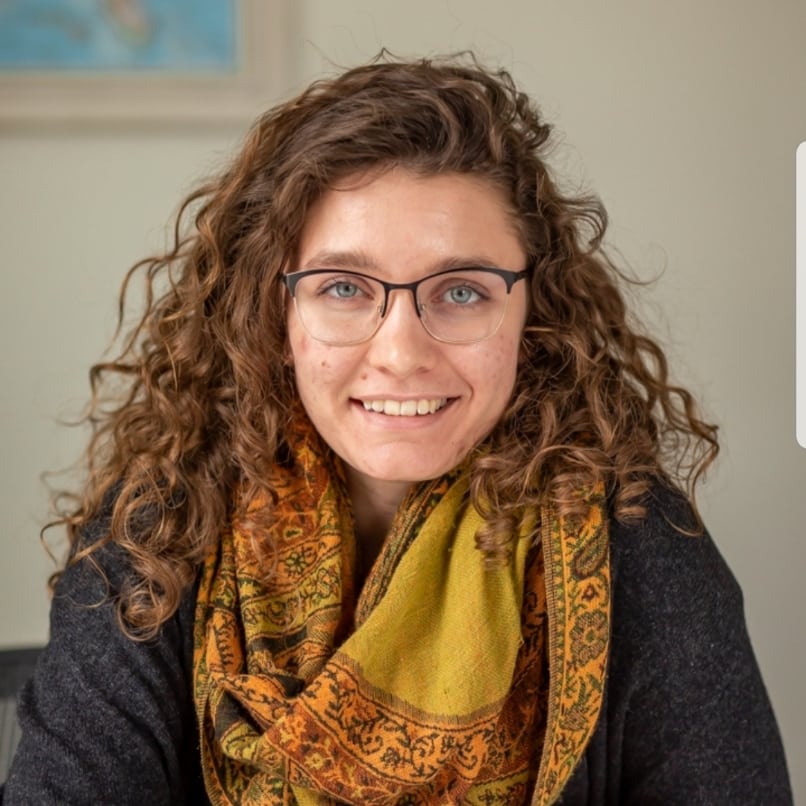 Marcella Brylski, ’20, grew up in the great state of Minnesota, where she learned to love sunny fall days and distance running along the Mississippi River. She studies English and Greek at Hillsdale and takes great joy in unexpected conversations with friends, discovering contemporary poets, and unearthing treasures at the local thrift store.
Marcella Brylski, ’20, grew up in the great state of Minnesota, where she learned to love sunny fall days and distance running along the Mississippi River. She studies English and Greek at Hillsdale and takes great joy in unexpected conversations with friends, discovering contemporary poets, and unearthing treasures at the local thrift store.
Published in April 2020